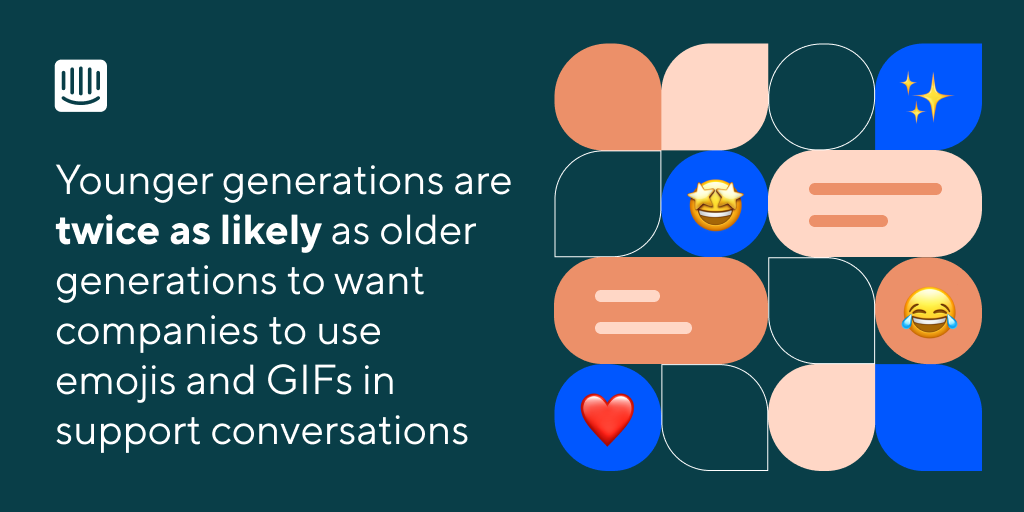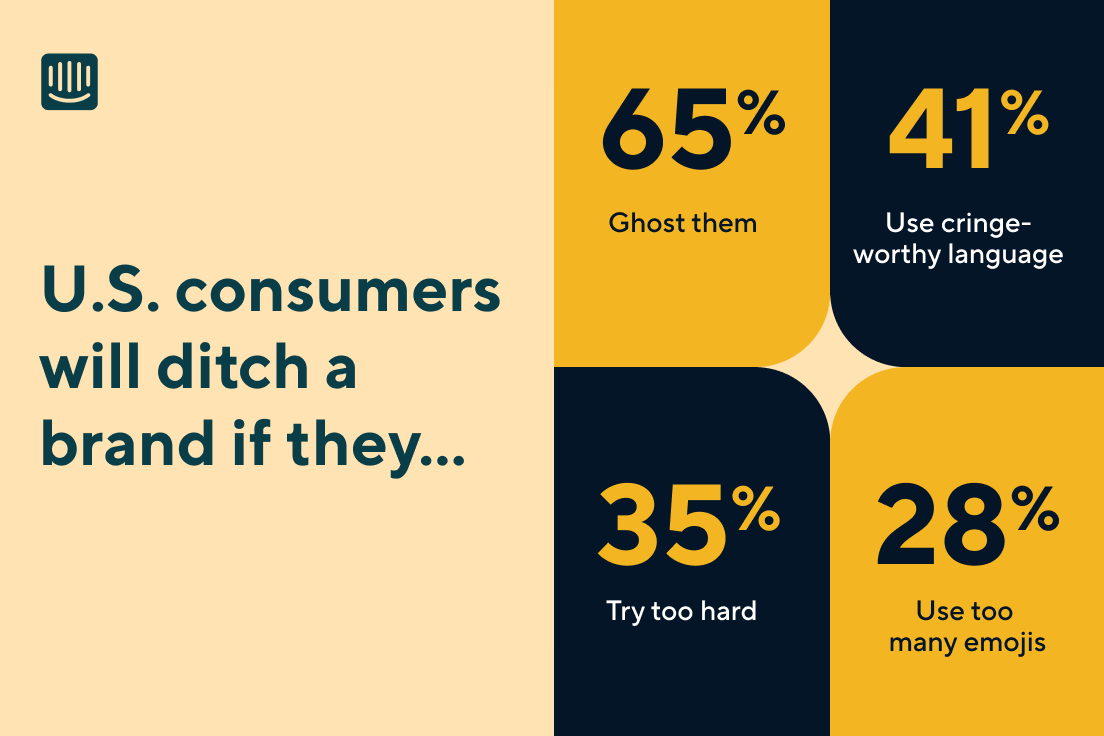How do customers want to talk to businesses? Our new survey reveals what you need to know
We’re fast approaching a new year, with major changes in customer support trends and customer expectations. So what does “good customer support” look like for 2023?
We conducted a major survey to find out what people want and expect from customer service, and made some fascinating discoveries. Our latest study contacted 1,000 US customers across generations, to learn more about what they want and expect from businesses as we enter 2023.
“Three in four customers reported feeling valued as a top factor in their decision to continue doing business with a company”
The overwhelming theme is that customers want to feel valued. Three in four customers reported feeling valued as a top factor in their decision to continue doing business with a company, while 64% will take their money elsewhere if that feeling isn’t there.
Delivering an exceptional customer experience means having a deep understanding of context and the individual preferences of your customers. Des Traynor, Intercom’s co-founder and Chief Strategy Officer here at Intercom, sums it up in this way: “Consumers have higher expectations for businesses to be transparent, to be present and to be available to connect with. How you talk to customers, where you talk to them, and what you say impacts whether or not they continue to give you their business.”
The results reveal some fascinating insights into preferences around how companies should talk to their customers, where they talk to those customers, and what they say when communicating with customers. Here are some of the main takeaways:
How you talk to customers
Tone and style of communication is the foundation of personal customer service. Gone are the days of stuffy business speak delivered via email, or even letter.
Key insights
Tone: The study showed an overall preference for a professional tone (56%), largely driven by Boomers – but with 61% of Gen Z buyers surveyed favoring a casual approach, that looks set to change rapidly over the next few years.
Message style: More than one-third (35%) of people surveyed prefer to receive several shorter messages rather than longer paragraphs, with Millennials showing the strongest preference (49%).
Emoji usage: Your company’s tone doesn’t just apply to the words you use, it also includes the images. Some 59% of consumers are OK with businesses using any emojis – but be sure to cater to your audience. Younger markets like Gen Z and Millennials enjoy the use of emoji in conversations with businesses, while Gen X and Boomers are less enamored, with acceptance rates of 60% and 32% respectively.

The study dug a little deeper to find out which emojis are welcome, and which consumers could do without. One in four prefer basic facial expressions, while object-based emojis are favored by only 13% of consumers. Whatever emojis you decide to use, don’t overdo it – 28% of consumers said that a business overusing emojis in their communications would encourage them to take their business elsewhere.
Top takeaway: Match your tone to your audience, the same way you would your website copy.
Where you talk to customers
The survey supported what we knew to be true: context is key to world-class customer support. Understanding the channels your customers use, and the types of messages they expect to receive on each one, is vital to offer them the smooth, personal support they expect.
Key insights
Yes to direct messaging: We chat to our friends and family through messaging, so why not the businesses we buy from? A huge 86% of respondents said they’d be all right with businesses communicating with them in the same way they talk to their friends and family, and 60% across all generations wish businesses would use direct messages and text messages to communicate with them.
“Gen Z and Millennials show an overwhelming preference for chatbots in certain situations, at 92% and 93% respectively”
No to automated phone systems: This won’t come as a shock to anyone who’s been trapped in the dreaded automated phone loop recently, but this legacy touch point emerged as the most disliked mode of communication, with 58% of respondents placing it firmly in their top three. It all comes back to context – when people pick up the phone, they expect to talk to a person.
“It depends” to chatbots: Nearly four in five respondents (79%) said that there are certain times and places where chatbots and online chat come out on top – situations like answering a quick question, confirming an appointment or delivery time, or canceling an order. But beware of the generational divide here. Gen Z and Millennials show an overwhelming preference for chatbots in certain situations, at 92% and 93% respectively, but chatbots are less popular among Boomers.
Top takeaway: Make the medium fit the message.
What you say to customers
Personalizing your customer support means knowing what you should say to customers, and through which channels. A major element of this is understanding what level of personalization your customers are comfortable with when it comes to their data.
As Des Traynor observes, “This study underscores that the best way to keep customers is to make your communication more personal – to show each customer that you know them, understand their issues, and can resolve them in the way they want.”
Key insights
Sensitive data is a sensitive subject: The study revealed that 76% of Boomers and 72% of Gen X consumers feel valued by businesses that show they know them and their order history – compared to 59% of Millennials and 49% of Gen Z counterparts. Carefully consider how you ask your customers to share their data with you when supporting them. Only 27% of Millennials are comfortable sharing sensitive information via chat, and the figure is even lower among younger and older generations.
Choose your words carefully: Nearly two-thirds – 64% – of consumers said that being disrespected by a company would prompt them to take their business elsewhere. Other red flags that will cause your customers to reconsider are cringe-worthy language like misused slang (41%), and trying too hard with inauthentic communication (35%).

Say something: The most important thing to say is something – even if it’s just acknowledging your customer’s request and letting them know you’ll get back to them soon. The survey revealed that 66% of consumers said they would leave a business if their issues were unresolved; 65% if a company failed to respond to them; and 61% if they were left waiting too long to respond.
Top takeaway: Understanding your customers makes it easier to know the right thing to say, but the most important thing is to say something.
Feeling ready for 2023? Learn more about how your team can offer world-class customer experience in Intercom’s Ultimate Guide to Conversational Support.







